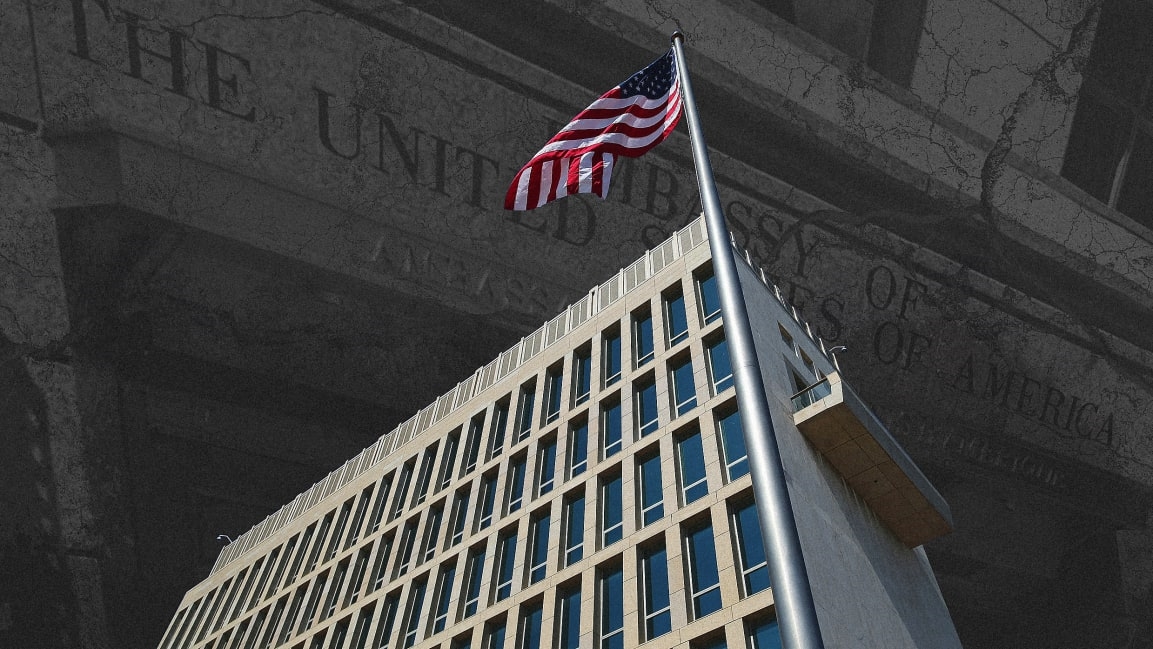A $3 billion maintenance backlog threatens U.S. diplomacy
American diplomacy has a $3 billion problem. According to a new report from the U.S. Government Accountability Office (GAO), deferred maintenance is plaguing the State Department’s overseas real estate assets, ranging from the dining rooms of ambassadorial residences to the classified sections of embassies. The backlog of maintenance issues has left a worrying amount of these spaces in such poor condition as to threaten their ability to function, according to the report. With nearly 8,500 buildings and structures owned by the State Department around the world, poorly maintained buildings could be putting American diplomacy and American diplomats at risk.
The issue largely stems from a building boom in diplomatic facilities that has lasted more than 20 years since a series of embassy bombings in the 1990s revealed the ways that some of the State Department’s buildings were not prepared for unexpected threats. “Congress and the administration took a step back and said, ‘we’ve got a lot of diplomats in places that are not particularly secure,’” says Jason Bair, director of international affairs and trade at the Government Accountability Office. “That oftentimes meant having to build brand-new facilities.”
Bigger and more highly secured facilities have since been built around the world, from the $806 million embassy compound in Kabul to the 5-acre embassy in central London designed by architects KieranTimberlake. Between 2015 and 2019 the square footage of State Department overseas real estate increased by 11%. But the funding for maintenance has flatlined or even declined, Bair says. The maintenance budget allocated annually by the State Department was $399 million in 2016 and $400 million in 2020. The annual budget for new construction is more than $2 billion.
As the building continues, the maintenance backlog gets worse. The GAO, which is part of the legislative branch of the federal government, finds that 20% of the State Department’s existing mission critical facilities are considered to be in poor condition.
“‘Mission critical’ really is the stuff that if you have a problem with it, it’s going to affect your ability to get your job done,” Bair says. “If for some reason the embassy is flooded, we have a major problem and it’s hard for us to achieve our mission.” One example of a mission-critical issue is the 1940s-era chancery office building in the U.S. embassy in Manila, where deferred maintenance has led to unhealthy mold and flooding issues throughout the building.
The issues run the gamut, and many would be familiar to the typical homeowner. “You’ve got HVAC issues, plumbing issues, electrical issues, just plain structural issues—it really is all over the map, literally and figuratively,” Bair says.

[Photo: U.S. Department of State]
The problems can also be somewhat embarrassing from a diplomatic perspective. Ambassadorial residences tend to be in the worst condition, according to the report. These homes, which are used traditionally to represent the U.S. and host events, tend to be old, if not historic, and under-maintained. One example highlighted in the report is the ambassadorial residence in Nairobi. “The kitchen was in such bad condition that it just wasn’t operable,” Bair says. “They don’t even use it as a kitchen. They use it as a place to store furniture.”

[Photo: U.S. Department of State]
Old buildings are not the only problem. New buildings can pose their own issues, such as automated air conditioning and heating systems that require specialized servicing when they break down. Planning for these kinds of maintenance issues up front should become a more standard practice, Bair says. “If you just drop a new state-of-the-art facility into sub-Saharan Africa, you’ve got to be thinking about what’s the plan for keeping all this great new stuff working,” he says.
Broken windows and glitchy air conditioners seem like fairly anodyne issues, but deferred maintenance and aging facilities can be much more problematic, creating vulnerabilities for diplomats and intelligence agents working on sensitive and classified issues within embassy compounds. One of the most pressing and perplexing issues facing the State Department’s overseas staff is the so-called Havana Syndrome, an unexplained brain injury that began affecting CIA officers and diplomats at the U.S. embassy in Havana in 2016 and which has since been reported by officials in places as varied as Germany, Uzbekistan, and Vietnam. Possible explanations for the painful symptoms include electromagnetic energy waves and sonic weapons, such as one used by the Soviets on the U.S. embassy in Moscow in the 1970s. There’s no clear explanation for what is causing the symptoms, or whether the buildings in which the injuries are occurring have any specific vulnerabilities that can be blamed. “I can’t make any explicit linkage to Havana Syndrome,” Bair says.
Another issue not directly addressed in the report is the fact that the classified areas within these compounds are often so high security that bringing in maintenance people is itself a security risk. Bair says some workers in classified areas have to do their own cleaning and maintenance, taking out trash and vacuuming, for example. The lack of maintenance workers means these staff members are also the front line for preventative building maintenance. An intelligence agent versed in Russian spy tactics or tracking cells of terrorist groups may be less capable of knowing when a leaky pipe is about to cause a flood, or when faulty wiring may be creating a vulnerability in a communications firewall. Bair says that for security reasons the GAO’s public report cannot lay out whether such vulnerabilities are present in any State Department buildings.
Wherever the problems are, the report suggests they’re only getting worse without an adequate budget for maintenance. In its official comments on the report, the State Department concurred with the GAO’s recommendations to better assess its buildings and prioritize maintenance on those considered mission critical.
“I don’t envy the State Department here,” Bair says. “We’re talking about 8,500 facilities all across the world. That’s a big, big job.”
Fast Company , Read Full Story
(76)



